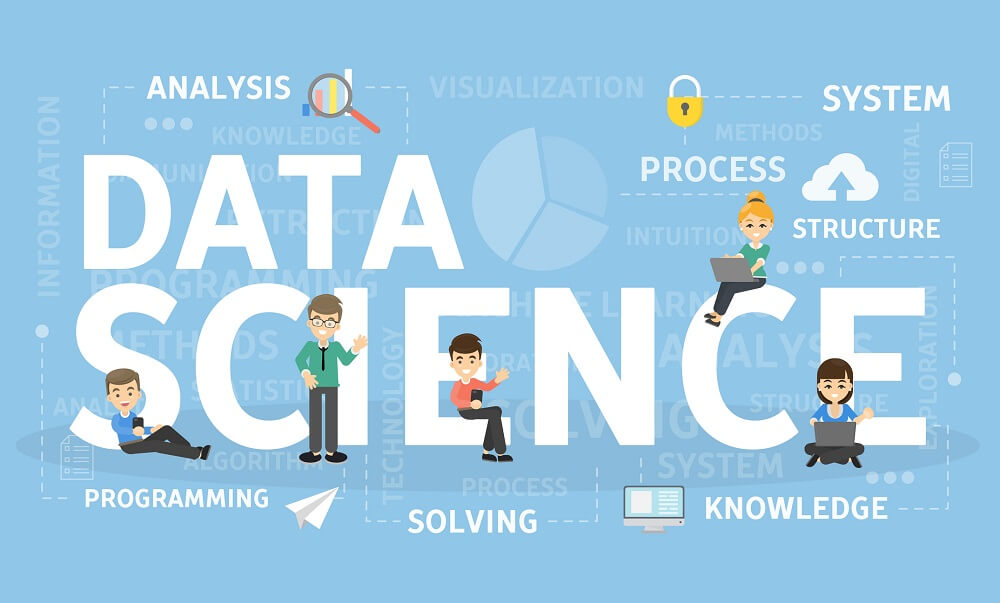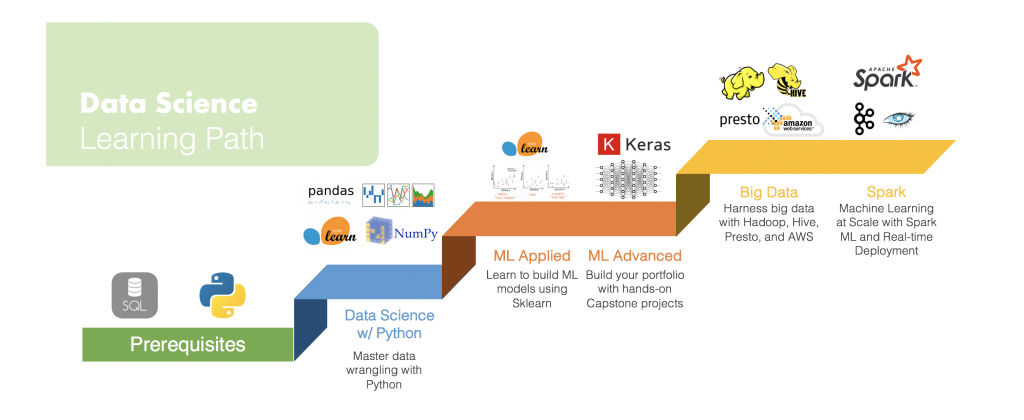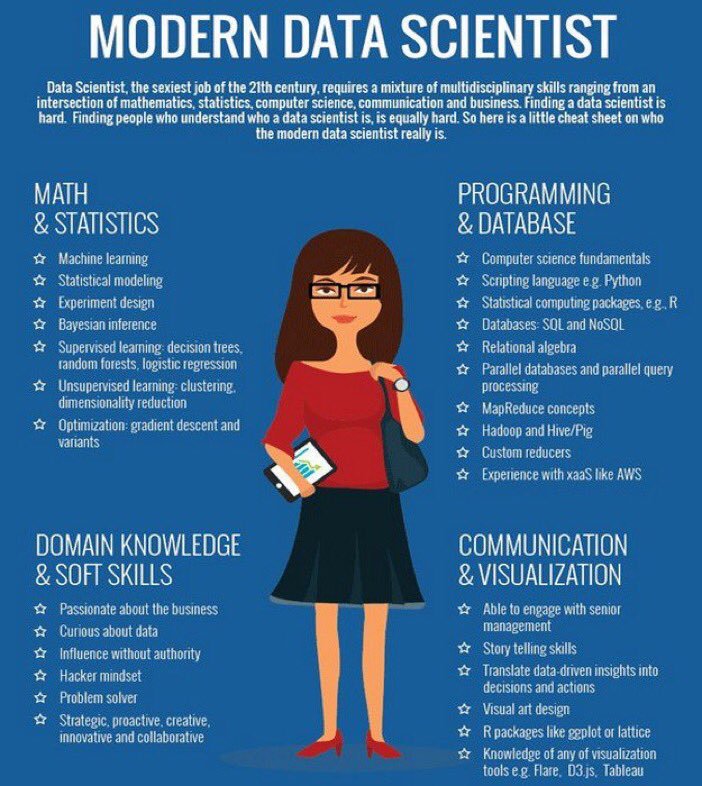Data Science Tutorial for Beginners: Introduction to Data Science
Data Science tutorial for Beginners: This introduction to Data Science tutorial main intention is to guide you all basics of such as what is Data Science, what is Data Scientist and how to become expert as Data Scientist.
Are you the one who is looking for the best platform for the Data Science tutorial? Or do you want to become an expert as a data scientist, but thinking where to start? Then why to think… Prwatech is an excellent option for you to get Data science training from basics to advanced level with 100% job assurance. We, India’s largest E-learning in Data Science are here to help you in learning Data science tutorials.
So, Let’s start our first topic “Data Science tutorial”.
What is Data Science?
Data Science is the extracting of knowledge directly from data through a process of discovery, analytics, and hypothesis analysis. It includes working with a huge amount of data. The data can be in the form of both structured and unstructured.

The various process involved derives the data from a source like extracting of data, cleaning of data, and then converting it into a user desirable format which can be further utilized the information to perform the task. Data Science is a knowledge of various fields that consists of planning, methods, process and extracts the knowledge of the system or idea from the data which is in multiple formats that might be organized or unorganized like Data Mining.
It is really very useful for managing large sets of data from the huge level of businesses which is using various algorithms and analyses. Essentially Data Science identifies the data insight. Now after reading all such definitions and applications of Data1 Science, you might be thinking you need to be masters from great universities to become a Data Scientist. I don’t say that you are wrong or the graduates from all those great universities are not that good in Data- Science, Yes they are good and some of them are just excellent.
But this doesn’t mean that you need to be one of them to be a successful Data Scientist.
What is Data Scientist?
Data scientists are a new breed of analytical data experts who pursue technical skills to solve complex problems – and the curiosity to explore what problems are needed to be solved.
How to Become a Data Scientist?
To become a Data Scientist you have to follow the below steps:

Step1: Learn Mathematics and Statistics
To be more specific you need to learn topics like Linear algebra, Calculus, Inferential Statistics and Differential Statistics. To be very honest you should have a great understanding of these concepts then it’s useless to have good hands-on knowledge about technologies like python or machine learning.
Because in Data Science we need to use all these Mathematical and Statistical concepts in python and machine learning using libraries like NumPy, SciPy, and Pandas.
Step2: Python
If you’re confident enough with Step 1 and you got to learn Python. Python one of awesome programming languages that is so easy to code that you guys will love to code in it.
Python contains many libraries that help a data scientist to work with different forms of data and apply different algorithms.
Step3: Learn libraries in Python like NumPy, SciPy, and Pandas
For Data Science using Python, we use different packages like NumPy, SciPy, and Pandas.
NumPy
NumPy is a fundamental package used for scientific computing in Python. It is a library in Python that provides a multidimensional array object and an assortment of routines for quick operations on arrays.
It includes mathematical, logical, shape manipulation, sorting, selecting, I/O, basic statistical operations, random simulation and much more.
SciPy
SciPy is a scientific library in Python for mathematics, science, and engineering. The SciPy library depends on NumPy, which provides convenient and quick N-dimensional array manipulations. The main reason for building the SciPy library is, it should work with NumPy arrays. It comes with many user-friendly and efficient numerical practices just like routines for numerical integration and optimization.
Statsmodels
Statsmodels is a Python module that provides classes and functions for the estimation of many different statistical models. An extensive list of statistics results is available for each estimator.
Pandas
Pandas is a library that provides high-performance, easy-to-use data structures and data analysis tools for the Python programming language.
Scikits Learn
Scikit-learn comes with a range of supervised and unsupervised learning algorithms through a consistent interface in Python.
The library is built upon the SciPy that must be installed before you can use sci-kit-learn. This stack that includes:
NumPy, SciPy, Matplotlib, IPython, Sympy, Pandas
It has functions to build machine learning models like Regression, Support vector machine, Clustering and many more.
It also includes functions to calculate the accuracy of models.
With Python, you can also perform data visualization using some particular libraries like MatPlotLib and Seabourn
MatPlotLib
MatPlotLibis a Python library that supports 2D and 3D graphics.
It is used to produce publications like Histogram, Power Spectra, Bar Chart, Box Plots and Scatter Plots with just a few lines of code.
It can easily integrate with Pandas Data-Frames to make visualization quickly and conveniently.
SEABOURN
Here Data scientists can build on top of MatPlotLib and introduces additional plot types.
It also makes MatPlotLib visualization Elegant and used to create Complicated Plots with ease.
Heatmap uses visualization which can create with Seabourn using just one lik=ne of code.
NoteBook
Here Data scientists can present their report in a storytelling kind of format as multiple blocks of code can be run with an output of each block of code displayed right below it.
It works as a magical organizer for Data Scientist and also makes curious to see the state of python libraries in the area of the future of Data Science.
To make our point on why python for data science you can view the Kaggle survey for the same.
Step 4: Learn Machine Learning:
Here we use a machine learning library in python in order to train the machine to make decisions with great approximations in order to avoid failures.
Step 5: Keep Practicing the above 4 to be a master
Without a doubt, We can conclude that Data Science is one of the factors that will allow us to revolutionize industries, every day we will see more examples in our daily lives as there is a huge demand for Data scientists in companies. This is the perfect choice to kick start your career in Data Science and Data Science Training institute in Bangalore offers the best course with advanced technologies and job assistance.
In this Data Science tutorial, we have covered concepts of introduction to Data Science, what is data science and its importance, what is Data Scientist and How to Become a Data Scientist by step by step process. This will get you a clear idea about Data Science.
We hope you liked our article on the Data Science tutorial for Beginners. Share your feedback with your comments.



